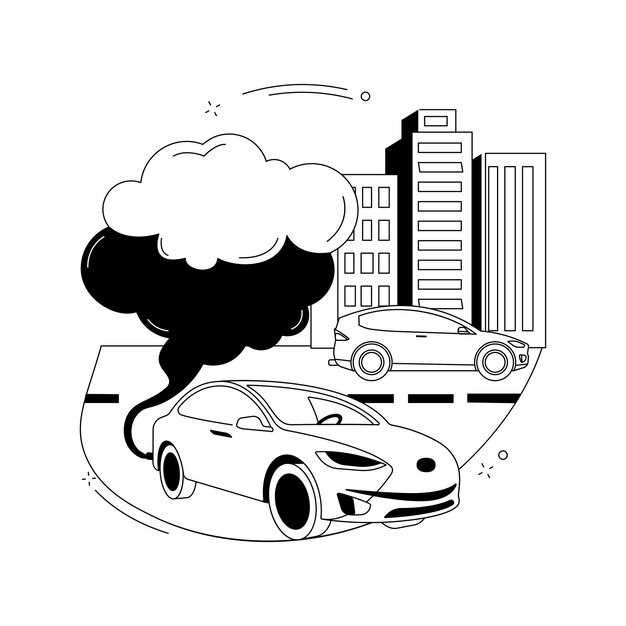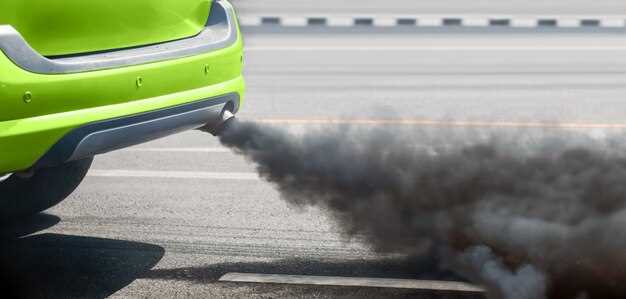
When it comes to tuning a race car, achieving optimal performance often casts a shadow over the critical aspect of emissions compliance. Race enthusiasts frequently grapple with the challenge of tuning their vehicles to maximize speed and power while still adhering to legal standards for emissions. This guide aims to bridge the gap between high-performance tuning and maintaining compliance with emissions regulations, ensuring that enthusiasts can enjoy their modified vehicles without the fear of legal repercussions.
The increasing scrutiny on emissions levels from both governmental bodies and environmental organizations has led to a stricter focus on compliance even in the racing community. Understanding the nuances of emissions testing is essential for car owners who wish to push their vehicles to the limit while remaining within legal boundaries. This article provides a comprehensive overview of techniques and strategies that can help ensure your tuned race car passes emissions tests without compromising on performance.
In the following sections, we’ll explore key modifications, best practices, and essential considerations that will enable you to strike a balance between high-performance capabilities and emissions compliance. From adjusting your engine tuning to implementing advanced exhaust systems, you will gain valuable insights that can lead you toward successful emissions testing while keeping your passion for racing alive.
Understanding Legal Emissions Standards for Tuned Vehicles
Tuning a race car offers increased performance and an exhilarating driving experience; however, it is crucial to understand the legal emissions standards that apply to modified vehicles. Each jurisdiction has specific regulations aimed at reducing environmental pollution. Compliance with these standards is not only a legal obligation but also essential for successful emissions testing.
Legal emissions standards typically encompass limits on exhaust pollutants such as carbon monoxide (CO), hydrocarbons (HC), and nitrogen oxides (NOx). These limits vary based on the vehicle type, model year, and state regulations. When tuning a vehicle, modifications may inadvertently increase these emissions, leading to non-compliance.
To ensure that a tuned vehicle conforms to legal standards, it is advisable to:
- Research local emissions regulations
- Utilize high-quality performance parts designed to meet emissions requirements
- Consider emissions-controlled tuning options that enhance performance without violating legal limits
Below is a general overview of common emissions standards and their implications for tuned vehicles:
| Region | Emissions Standard Type | Key Components Affected |
|---|---|---|
| United States (EPA) | Tier 1, Tier 2, Tier 3 | CO, NOx, HC |
| California | CARB Standards | CO, NOx, PM |
| European Union | Euro 6 | NOx, PM, CO, HC |
| Australia | ADR Standards | CO, NOx, HC |
In summary, while vehicle tuning is an integral part of automotive culture, understanding and adhering to legal emissions standards is vital for ensuring that your tuned race car is both performance-oriented and environmentally compliant. By being informed and proactive, car enthusiasts can enjoy the benefits of tuning without running afoul of legal requirements.
Essential Modifications to Pass Emissions Tests
Passing emissions tests with a tuned race car requires strategic modifications that align performance with regulatory standards. The first step is to ensure your vehicle’s engine management system is appropriately calibrated. Tuning the engine’s Fuel Management Unit (FMU) is essential, as it can optimize the air-fuel ratio to reduce harmful emissions without sacrificing power.
Next, consider installing high-quality catalytic converters. Upgrading to a high-flow catalytic converter can maintain the vehicle’s performance while ensuring the exhaust gases are adequately treated. Ensure the chosen converter meets the necessary emissions standards for your region.
Another key modification involves the exhaust system. Opting for a performance exhaust that is designed to minimize backpressure can improve efficiency and emissions output. However, it’s crucial to choose components that comply with the local emissions laws.
Additionally, incorporating an EGR (Exhaust Gas Recirculation) system can significantly help in lowering nitrogen oxide (NOx) emissions. This system recycles a portion of the exhaust gas back into the intake, which can greatly reduce the formation of NOx during combustion.
Regular maintenance of the vehicle plays a vital role in emissions management. Keeping the engine well-tuned, replacing spark plugs, and ensuring proper fuel quality will support cleaner emissions. A well-maintained engine runs smoother, reducing the likelihood of excessive pollutants being emitted.
Finally, consider using emissions-friendly fuel additives that can enhance fuel combustion and reduce harmful emissions. These additives often contain detergents and other compounds that clean the fuel system, contributing to lower emissions levels.
Optimal Tuning Solutions for Emissions Compliance

When tuning a race car, achieving optimal performance while maintaining emissions compliance is a critical balance. The key to successful tuning lies in understanding the vehicle’s engine dynamics and the emissions regulations that govern it. Addressing factors such as fuel mapping, ignition timing, and air-fuel ratio can significantly impact emissions output.
One effective strategy involves recalibrating the engine’s electronic control unit (ECU). This can optimize fuel injection timing and reduce harmful emissions. Advanced tuning software allows for precise adjustments, facilitating the balance between performance and compliance. Use of high-quality aftermarket components, such as catalytic converters, can also enhance emissions control while improving exhaust flow.
An important aspect of tuning is testing the car post-modification to ensure it meets the necessary emissions standards. Utilizing diagnostic tools can help track emissions levels during various operating conditions. Incorporating an effective exhaust system can further aid in managing pollutants while maximizing engine efficiency.
Additionally, routine maintenance, including regular cleaning of fuel injectors and air filters, ensures that the tune remains effective and emissions stay within legal limits. Establishing a scheduled inspection and tuning can prevent drift away from compliance over time.
Ultimately, informed tuning solutions lead to race cars that not only perform at high levels but also comply with emissions regulations, benefiting both the environment and the driver’s experience on the track.
Testing and Monitoring Your Vehicle’s Emissions Levels
Ensuring your race car meets emissions standards is crucial for both legal compliance and performance optimization. Testing your vehicle’s emissions levels involves a systematic approach to detect any potential issues that could lead to failing emissions tests. Regular monitoring allows you to identify trends and make necessary adjustments before official testing.
Start by using an OBD-II scanner to diagnose your vehicle’s emissions control systems. This tool provides real-time data about the engine’s performance and the state of emissions components. Look for stored trouble codes and monitor parameters like fuel trim, oxygen sensor readings, and catalytic converter efficiency.
Additionally, conducting a tailpipe emissions test can give you a clear picture of the exhaust gases being emitted. Portable emissions analyzers are available and can help you measure levels of CO, hydrocarbons (HC), and nitrogen oxides (NOx) directly from the exhaust system. These measurements are crucial to understanding how your tuning modifications impact emissions.
Regularly replacing critical components, such as air filters, spark plugs, and oxygen sensors, can significantly enhance your vehicle’s emissions performance. Invest in high-quality parts to ensure compliance with legal standards. Moreover, engaging in preventive maintenance practices will prolong the lifespan of your emissions control systems.
Finally, it’s essential to stay updated on local emissions regulations. These regulations can vary significantly by region, affecting how you tune your race car. Understanding legal requirements will help you make informed decisions and maintain your vehicle’s compliance, thus readying it for any emissions test that lies ahead.
Common Pitfalls to Avoid When Tuning for Emissions
Tuning a race car for emissions tests can be a challenging task, especially when trying to balance performance and legal compliance. To navigate this complex landscape, it’s essential to avoid several common pitfalls that can hinder your efforts to pass emissions tests.
1. Ignoring Legal Requirements: Each region has specific emissions regulations that must be adhered to. Before starting any tuning process, familiarize yourself with local laws to ensure that your modifications are compliant. Operating outside of legal limits can lead to hefty fines and penalties.
2. Overlooking the Importance of Fuel Quality: The type of fuel used can significantly impact emissions output. Using lower quality fuels may lead to increased emissions due to incomplete combustion. Always opt for high-quality fuel that meets your vehicle’s specifications to minimize harmful exhaust output.
3. Neglecting Regular Maintenance: A well-maintained vehicle is essential for passing emissions tests. Failing to replace worn spark plugs, air filters, and oxygen sensors can result in elevated emissions. Regular servicing can help ensure that your car runs efficiently and is less likely to fail emissions checks.
4. Exceeding Modification Limits: While performance upgrades are tempting, excessive modifications can increase emissions beyond permissible levels. Focus on legal performance enhancements, such as optimizing the engine management system or exhaust system, to maintain compliance without compromising performance.
5. Failing to Use Emissions-Specific Software: Many tuning software solutions offer settings specifically designed to optimize emissions. Utilizing software that considers legal standards can help fine-tune your vehicle, ensuring that it remains within the legal emissions limits while maximizing performance.
6. Ignoring the Role of Onboard Diagnostics (OBD): Modern vehicles are equipped with OBD systems that monitor emissions-related components. Disabling or neglecting these systems can trigger warning lights, leading to a failed emissions test. Ensure that any tuning is compatible with OBD functionality.
7. Not Conducting Pre-Test Assessments: Before undergoing an emissions test, conduct thorough assessments to gauge your vehicle’s emissions levels. Performing diagnostic tests can identify potential issues and allow for adjustments that enhance the chance of passing.
Avoiding these pitfalls is crucial for successfully tuning your race car for emissions tests. By adhering to legal requirements and ensuring optimal vehicle performance, you can enjoy the thrill of racing without compromising on environmental responsibility.
Resources for Staying Updated on Emissions Regulations

Keeping track of emissions regulations is crucial for any race car enthusiast engaged in tuning their vehicle to ensure it meets legal standards. Here are various resources that can help you stay informed:
- Government Websites:
- Visit the Environmental Protection Agency (EPA) website for updates on national emissions standards.
- State Department of Motor Vehicles (DMV) often provides information on local emissions regulations.
- Automotive Magazines and Journals:
- Subscribe to specialized automotive publications that focus on performance and emissions issues.
- Read articles and reviews from experts about the latest tuning techniques and their compliance with emissions standards.
- Online Forums and Communities:
- Engage in discussions on platforms like Reddit or dedicated car tuning forums where enthusiasts share their experiences with tuning and emissions compliance.
- Join social media groups focused on race cars and emissions; these communities often share latest regulatory changes.
- Webinars and Online Courses:
- Participate in webinars hosted by automotive experts that cover emissions regulations and tuning practices.
- Consider enrolling in online courses focusing on automotive engineering and emissions control technologies.
- Professional Associations:
- Join organizations such as the Society of Automotive Engineers (SAE) to access resources and stay connected with industry experts.
- Attend workshops and conferences which often provide insights into evolving emissions standards and tuning innovations.
Regularly consulting these resources will enable you to keep your tuned race car compliant with emissions regulations, allowing for both improved performance and legal driving practices.




